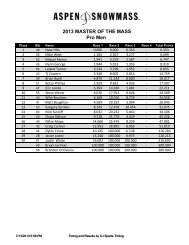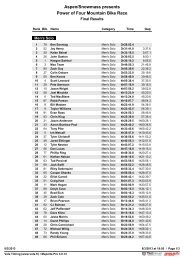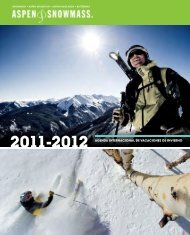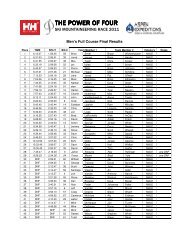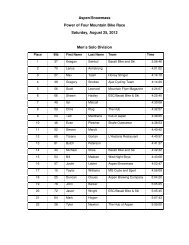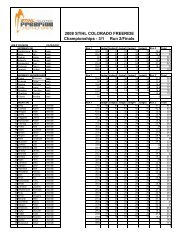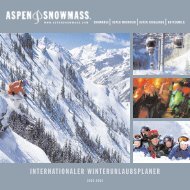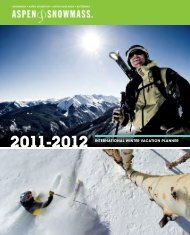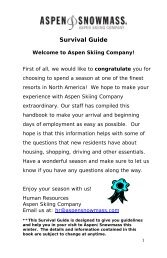LEED is Broken - Aspen/Snowmass
LEED is Broken - Aspen/Snowmass
LEED is Broken - Aspen/Snowmass
You also want an ePaper? Increase the reach of your titles
YUMPU automatically turns print PDFs into web optimized ePapers that Google loves.
h<strong>is</strong> day job, Field directs the Department of Global Ecology at Carnegie Mellon<br />
University. If a global ecolog<strong>is</strong>t doesn’t find value in <strong>LEED</strong>, will Donald Trump?<br />
Milwaukee’s new Urban Ecology Center <strong>is</strong> one of the greenest buildings in the upper<br />
Midwest. Certified? No, “because it could have added as much as $75,000 to the cost,<br />
just for the paperwork…” says Executive Director Ken Leinbach. 17<br />
In “The Cost of Green: A Closer Look at State of California Sustainable Building<br />
Claims,” 18 the authors note that “Our review indicates many developers are leery of the<br />
costs of adopting the <strong>LEED</strong> standard.” Eric Roberts, one of the developers interviewed<br />
for the report, says, “People are starting to think that it’s enough to use the <strong>LEED</strong><br />
checkl<strong>is</strong>t as guidance because actual certification <strong>is</strong> too expensive and time consuming.”<br />
Roberts built the first <strong>LEED</strong> reg<strong>is</strong>tered office project in San Franc<strong>is</strong>co, but never<br />
bothered to fin<strong>is</strong>h the application process. It <strong>is</strong> not good for the USGBC when a <strong>LEED</strong>built<br />
structure doesn’t get certified because it’s too expensive. Th<strong>is</strong> must change, and we<br />
d<strong>is</strong>cuss some possible solutions to th<strong>is</strong> problem at the end of section four.<br />
Problem # 2: Point Mongering and <strong>LEED</strong> Brain<br />
“I’m sick of the hype. I’m sick of meetings where you spend endless hours debating a<br />
<strong>LEED</strong> point instead of focusing on good design.”<br />
—respondent to the Green Building Alliance Survey 19<br />
Point mongering <strong>is</strong> what happens when the design team becomes obsessively focused on<br />
getting credits, regardless of whether they add environmental value. Why does th<strong>is</strong><br />
happen? Because there <strong>is</strong> prestige in getting a high <strong>LEED</strong> rating; it can make your<br />
reputation as a green company. Since <strong>LEED</strong> certification <strong>is</strong> costly and time consuming,<br />
gaming a final few credits can be worth its weight in <strong>LEED</strong> Gold.<br />
17<br />
Blume, Ed. 2005. “Urban Eco Center Taps Nature’s Bounty,” W<strong>is</strong>consin Renewable Quarterly, Winter.<br />
18<br />
Greenspirit Strategies, Ltd. 2004. “The Cost of Green: A Closer Look at State of California Sustainable<br />
Building Claims.” Available online at<br />
http://www.apawood.org/level_b.cfm?content=pub_ewj_0402_green. Accessed March, 2005.<br />
19<br />
Green Building Alliance. 2004. “<strong>LEED</strong>-NC: The First Five Years.” Report on the Greater Pittsburgh<br />
region’s experience using Leadership in Energy and Environmental Design for New Construction. Green<br />
Building Alliance, 64 S. 14 th Street, Pittsburgh, PA, 15203. www.gbapgh.org. p.4.<br />
7



